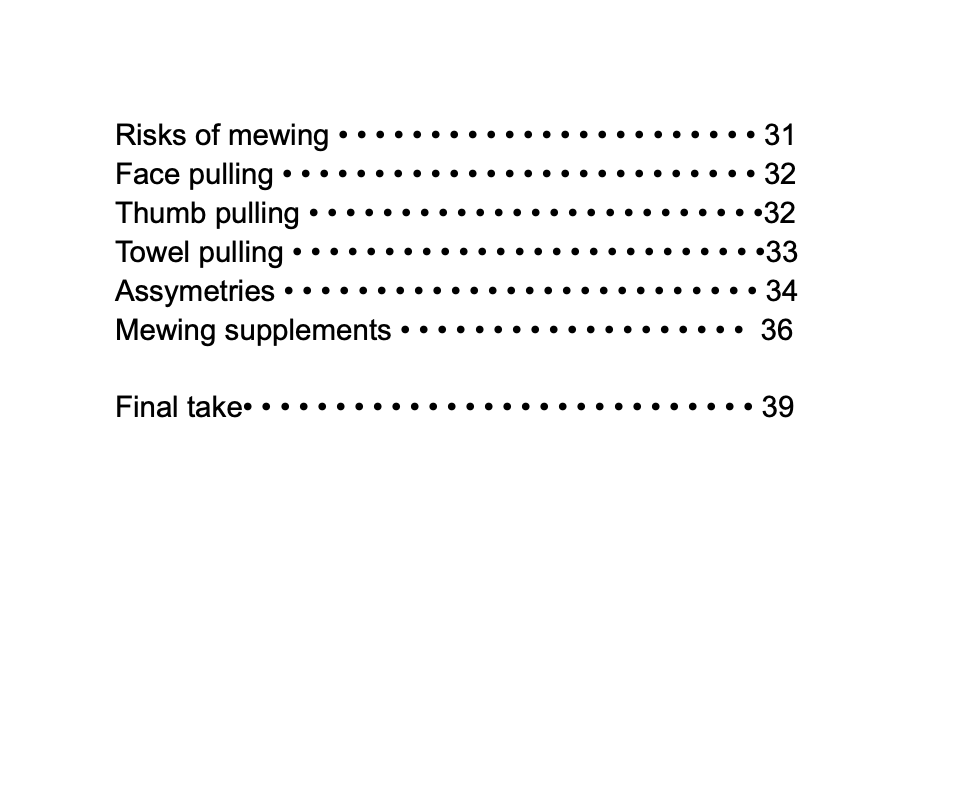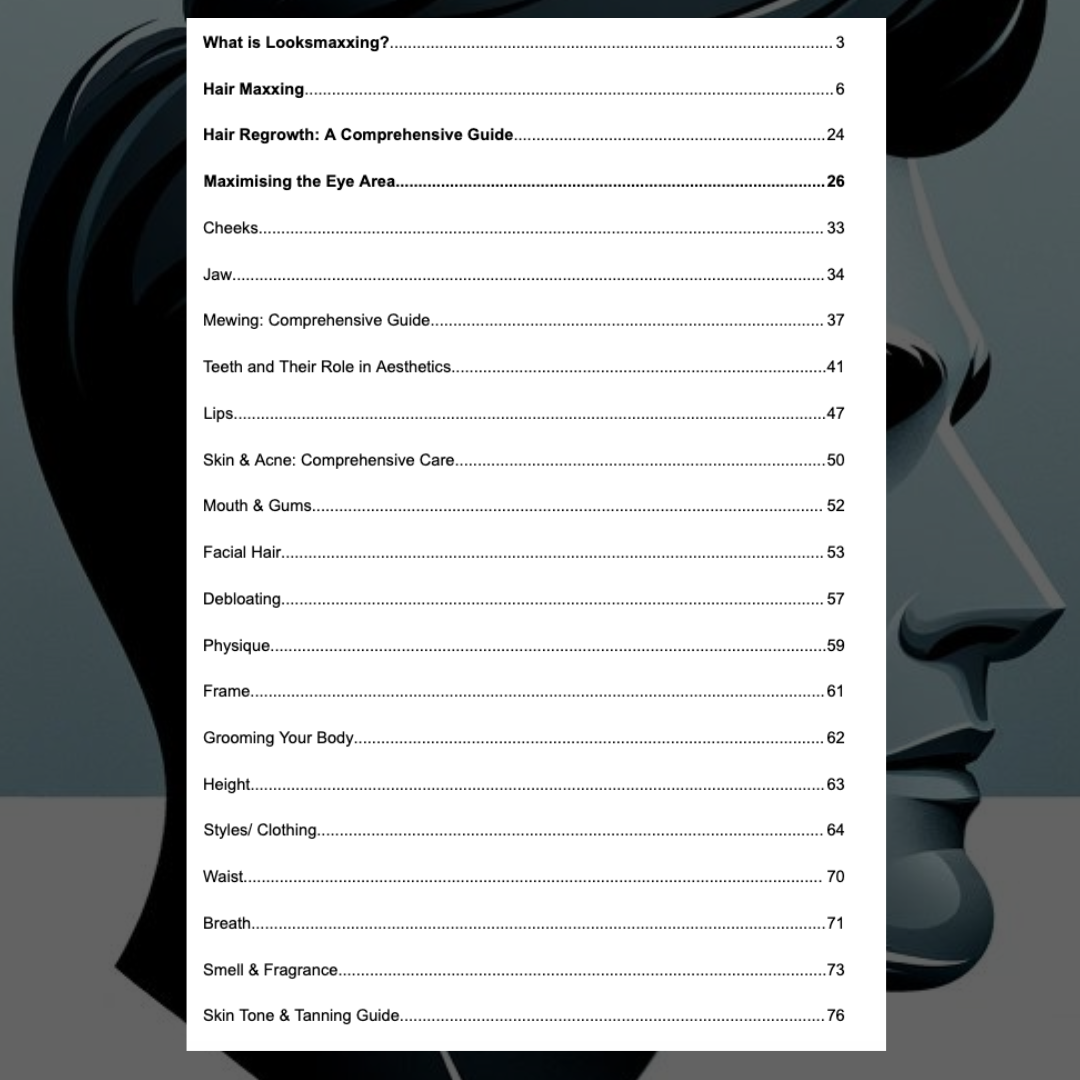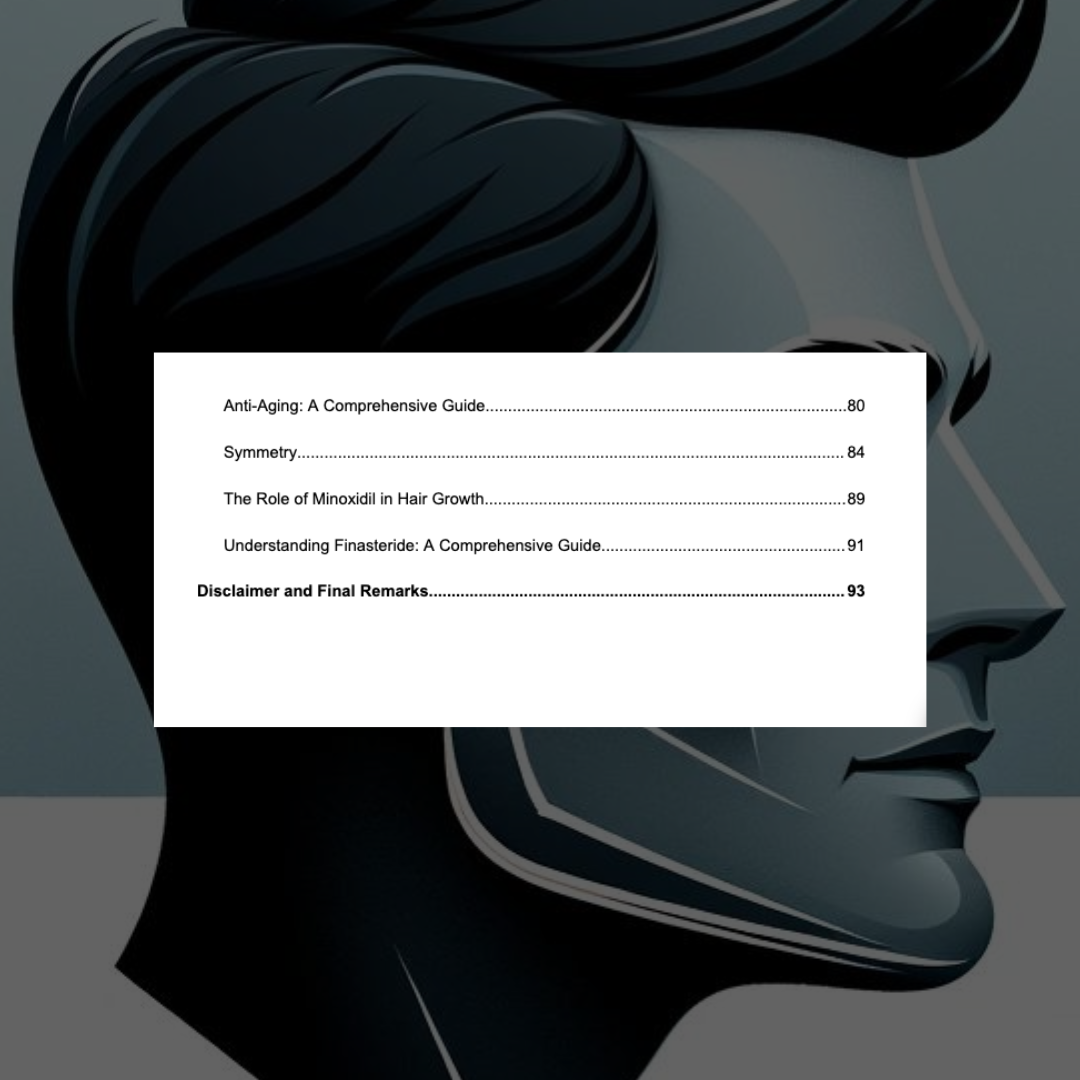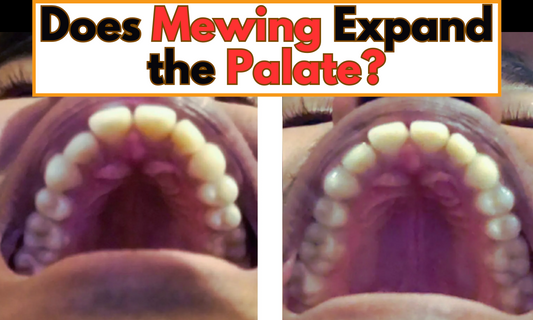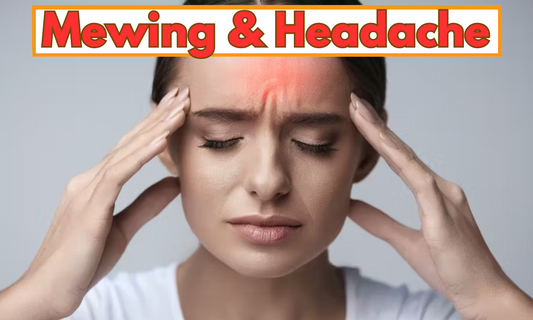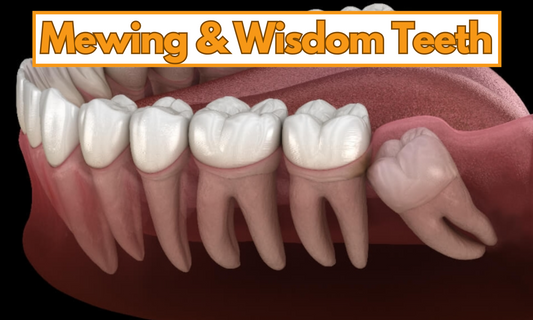How Mewing Changes Your Face and Facial Muscles

Share
The Role of the Tongue in Mewing

The focal muscle engaged during mewing is undoubtedly the tongue. While the tongue comprises a collection of muscles, for simplicity, we'll treat it as a unified entity in this discussion. Proper mewing involves placing the tongue against the roof of the mouth, setting off a chain reaction of favorable changes in the facial structure. The back third of the tongue plays a crucial role in achieving the desired results, as it helps in pushing the maxilla forward and upward.
Mewing's effectiveness largely hinges on maintaining proper tongue posture. By pressing the tongue against the palate, particularly the back third, you encourage the maxilla to move forward and upward.
This movement can lead to significant changes in the facial structure over time. Correct tongue posture not only assists in achieving aesthetic goals but also contributes to better breathing habits, as it encourages nasal breathing over mouth breathing.
How Mewing Widens the Dental Arch
One of the remarkable effects of mewing is its ability to widen the dental arch. Studies, such as Dean's research in 2016, have reinforced the strong correlation between tongue posture and dental arch form.
By strategically positioning the tongue, mewing triggers the tongue muscles to work toward expanding the dental arch, creating space for teeth to align correctly. This expansion can lead to a broader smile and improved alignment of the teeth, which are key aspects of facial aesthetics.
Widening the dental arch not only enhances the smile but also contributes to overall facial balance. A well-aligned dental arch ensures that the teeth have sufficient space, reducing the likelihood of overcrowding. This can prevent dental issues and improve oral health. Additionally, a broader dental arch can influence the positioning of the cheekbones, adding to the aesthetic appeal of the face.
Forward Growth of the Maxilla Due to Mewing
Mewing is renowned for its capacity to bring about forward facial growth. This transformative process is driven by the tongue's consistent pressure on the palate. Over time, this forward movement can significantly enhance one's facial appearance.
Proper tongue posture aims to rectify the effects of mouth breathing and improper tongue placement, gradually rotating the maxilla upwards and forwards. This adjustment not only improves facial symmetry but also supports better nasal breathing.
Forward growth of the maxilla is a critical aspect of mewing. As the maxilla moves forward, it positively impacts the overall facial profile. This forward movement can reduce the appearance of a recessed jawline and contribute to a more defined and attractive facial structure. Consistent practice of proper tongue posture is essential for achieving these results, as it ensures continuous pressure on the palate, encouraging the desired bone remodeling.
Achieving More Deep Set 'Hunter Eyes' with Mewing
Hunter eyes, characterized by a deep-set and sharp appearance, are perceived as more attractive due to their fierce look.
Mewing theoretically allows the maxilla to move up and forward, which means that the undereye area and bone move up and forward as well, contributing to a more defined and appealing eye area.
This forward and upward movement can reduce the appearance of dark circles and puffiness, enhancing the overall eye aesthetics.
Achieving hunter eyes involves the subtle upward and forward movement of the midface. This change can lead to a more youthful and alert appearance. By consistently practicing mewing, individuals can enhance the undereye area, making it appear less sunken and more vibrant. This transformation can significantly impact the overall attractiveness of the face, contributing to the coveted hunter eyes look.
Impact of Mewing on the Hyoid Muscles
Engaging in mewing necessitates the tongue applying force to the roof of the mouth. In doing so, it calls upon the hyoid muscles, located beneath the chin. These muscles must exert additional effort to elevate the posterior third of the tongue to the palate.
This consistent engagement results in the tightening of these muscles, ultimately contributing to a more pronounced jawline and a reduction in the appearance of a double chin. The hyoid muscles, including the mylohyoid, geniohyoid, and digastric, work together to support this process.
The hyoid muscles play a crucial role in maintaining proper tongue posture. By elevating the tongue, these muscles help in achieving the correct mewing position.
Over time, this engagement can lead to a more defined and chiseled jawline, as the muscles beneath the chin become more toned. Additionally, the consistent practice of mewing can reduce the appearance of a double chin, contributing to a more streamlined facial profile.
Mewing's Effect on Cheekbone Enhancement
Mewing indirectly influences the outward expansion of the cheekbones as the dental arch widens.
By maintaining proper tongue posture, one can indirectly stimulate the outward protrusion of the cheekbones, yielding a high-fashion model-like appearance. This enhancement is subtle but significant, contributing to a more balanced and attractive facial structure.

Enhancing the cheekbones through mewing involves the gradual outward movement of the facial bones.
This process can lead to a more defined and sculpted appearance, reminiscent of high-fashion models. By consistently practicing mewing, individuals can achieve a more balanced facial structure, with prominent cheekbones that add to the overall attractiveness of the face.
Buccinator Muscle Activity During Mewing
While mewing does not directly work the buccinator muscles, it encourages less activity in these muscles. Achieving optimal mewing results requires mastering the art of proper swallowing, a process where the tongue, rather than the cheeks, plays a crucial role.

The reduction in activity in these muscles reduces the size of them make your cheeks slimmer.
This transition to correct swallowing techniques is essential for realizing the desired results, particularly for those aiming for hollowed-out cheekbones. Reducing buccinator muscle activity can also prevent the development of facial lines and wrinkles associated with improper swallowing techniques.
This shift towards correct swallowing practices ensures that the tongue, rather than the cheeks, plays a central role, contributing to the overall effectiveness of mewing and the achievement of desired facial aesthetics.
Masseter Muscle Engagement and Mewing
Mewing doesn't directly target the masseter muscles, which are primarily responsible for chewing. However, engaging these muscles plays a crucial role in the mewing process. In ancestral times, individuals had to chew tougher, calorie-scarce foods, contributing to more extensive chewing and, consequently, wider jaws.

While mewing advocates chewing gum to engage the jaw muscles, excessive chewing can lead to overdevelopment of the masseter muscles, creating a less proportionate appearance. Moderation is key to avoiding hypertrophy of the masseter muscles.
The masseter muscles are essential for chewing and play a supporting role in mewing. While engaging these muscles can contribute to jaw development, it's crucial to avoid excessive chewing to prevent overdevelopment.
Striking a balance ensures that the jaw muscles are sufficiently engaged without leading to disproportionate facial features. Proper mewing practices can help in achieving a well-defined jawline without the risk of hypertrophy.
Takeaway
Mewing's impact extends beyond bone structure, touching upon various facial muscles that influence the transformation of one's facial appearance. Understanding the intricate relationship between mewing and these muscles is essential for those embarking on the journey of facial enhancement.
By harnessing the power of proper tongue posture and engaging these muscles, individuals can take proactive steps toward achieving their desired facial aesthetics. Consistent practice and patience are crucial for realizing the full benefits of mewing.
Mewing is a holistic practice that involves the engagement of multiple facial muscles. From the tongue and hyoid muscles to the cheekbones and masseter muscles, each plays a crucial role in the overall transformation of the face.







